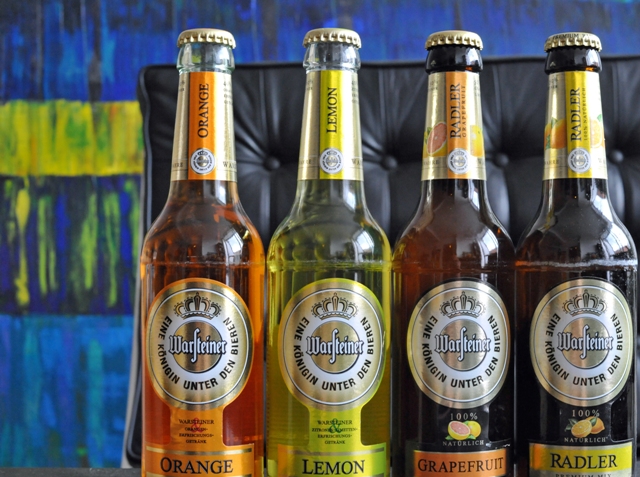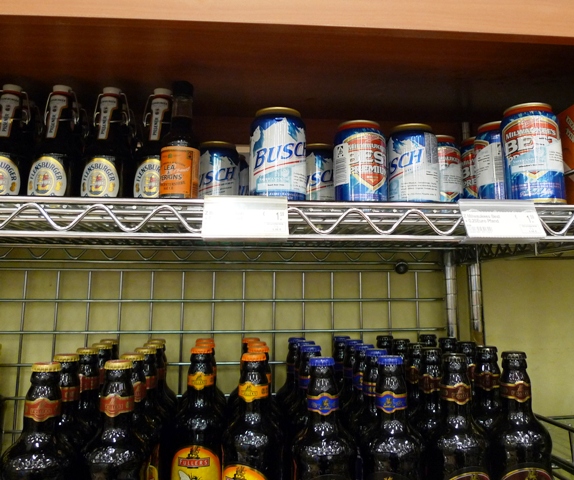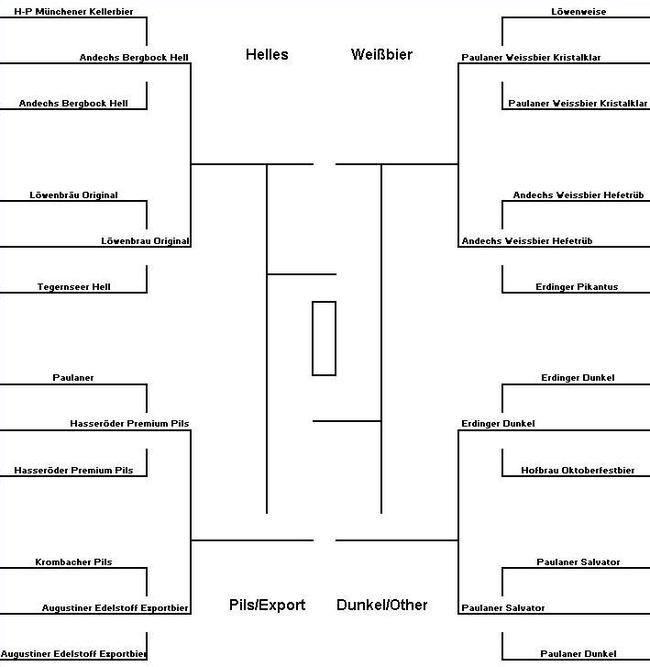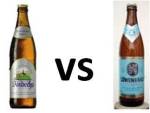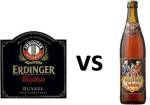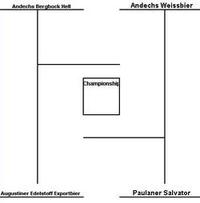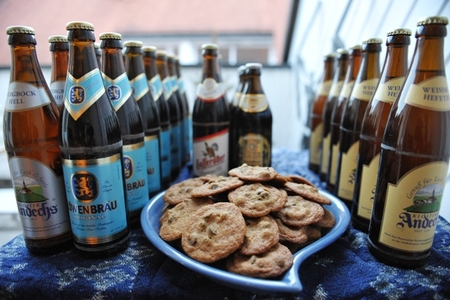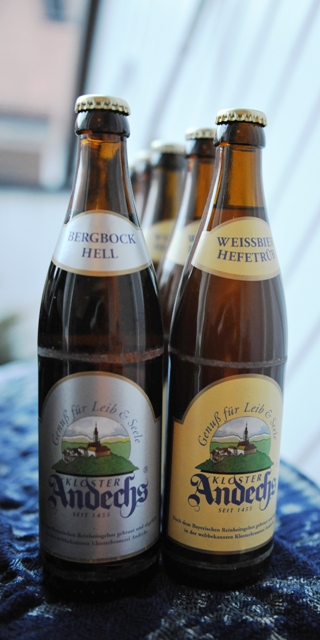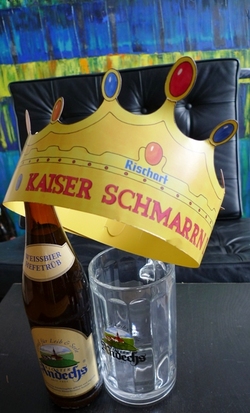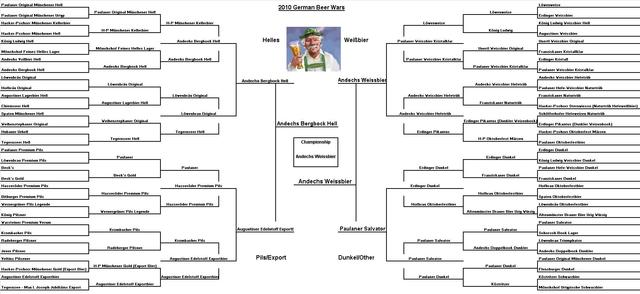Radler Tournament - Becks
 Monday, October 3, 2011 at 9:00
Monday, October 3, 2011 at 9:00 After our first radler round, tasting four Warsteiner beer mixes, we decided to test out 4 of the Beck's offerings. Beck's is notable in the flavored beer category, not only because it seems to have more varieties widely available than anyone else, but also because its Green Lemon is one of the most popular beer mixes. Many good Bavarians will turn up their noses at the idea of a fruity beer mixed drink, but Beck's Green Lemon seems to be one of the firt and one of the more accepted ones out there.
In addition to its normal Pils beer assortment (we tasted Beck's and Beck's Gold in the Schnitzelbahn Beer Tournament), Beck's offers several flavored beers. Beck's Green Lemon was introduced in 2005, followed the next year by Chilled Orange and Level 7 (Guarana and lemongrass alcoholic energy drink). Then in 2008 came Beck's Ice, a mint and lime beverage that Beck's describes as having "filtered out the coloring of beer leaving the typical Beck's taste."
We'll taste it in another round, but this year they're producing a "limited edition" Black Currant.
All of these are categorized as beer mixed drinks (Biermixgetränken), with 2.5% alcohol content. They also make a Beck's Lime, which at 4.9% alcohol content is described as "Real Beck's with a shot of lime."
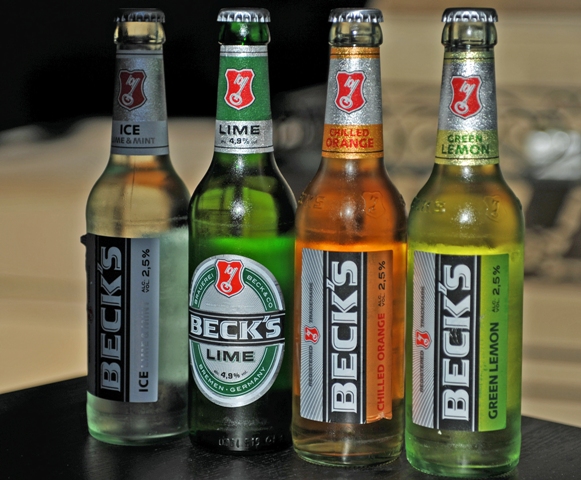
So, for this round we started with the Green Lemon, Lime, Ice, and Chilled Orange. Our biggest question before the tasting was "what's the difference between Green Lemon and Lime?" We did all the research after the tasting, so we could go into it without any prejudice. Therefore, we were unprepared for how different Green Lemon and Lime were. The Green Lemon tastes like beer, though a light one with a lime flavor. It's light, crisp, and sparkly and really enjoyable. A good mix, that isn't too sweet but retains the taste of beer.
The Lime tasted exactly as described - a real full beer, with a shot of lime... a very small hint of lime. While it's definitely a German pils, it reminds me of a Corona with lime. The lime softens the pils hoppiness and I think this would be a great beer with Mexican food. While we were pleasantly surprised by both, we preferred the smooth, light Green Lemon. The Lime was good, but had a slight sour finish. Had we paired it with food, it might have beat its lighter brother. But for summer beer drinking, we'd choose the Green Lemon.
Then we had Beck's Ice Lime & Mint vs Beck's Chilled Orange. After the creamsicle-y Warsteiner Orange, we weren't sure what to expect. And we had no idea what to expect with the Lime & Mint. Well, Beck's Ice basically is Smirnoff Ice with less alcohol. There's no beer taste whatsoever. I'd wouldn't be suprised if this one does well. Caipirinhas are quite popular here, and this is kind of a caipirinha-flavored drink. It's very smooth and easy to drink.
The Chilled Orange was also good, and had much more of a natural mandarin orange flavor, rather than the orange creamsicle sweetness of Warsteiner. We didn't love either of them, but we found the Chilled Orange to be more drinkable. The Ice probably is more popular, but it would be hard to drink much of it.
Not surprisingly, the Green Lemon then beat the Chilled Orange in the final of this preliminary round. We found the Green Lemon to be more in the spirit of a radler and the Orange has a slight artificial taste. Not bad, but we just prefered the smooth, not too sweet Green Lemon.

 Frau A ...
Frau A ...  Post a Comment
Post a Comment 



